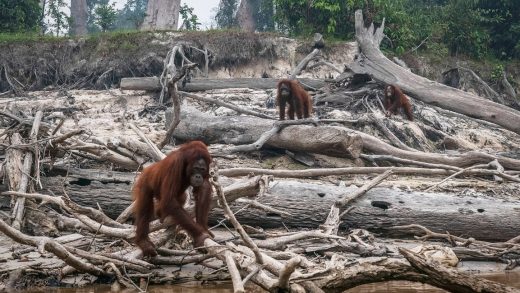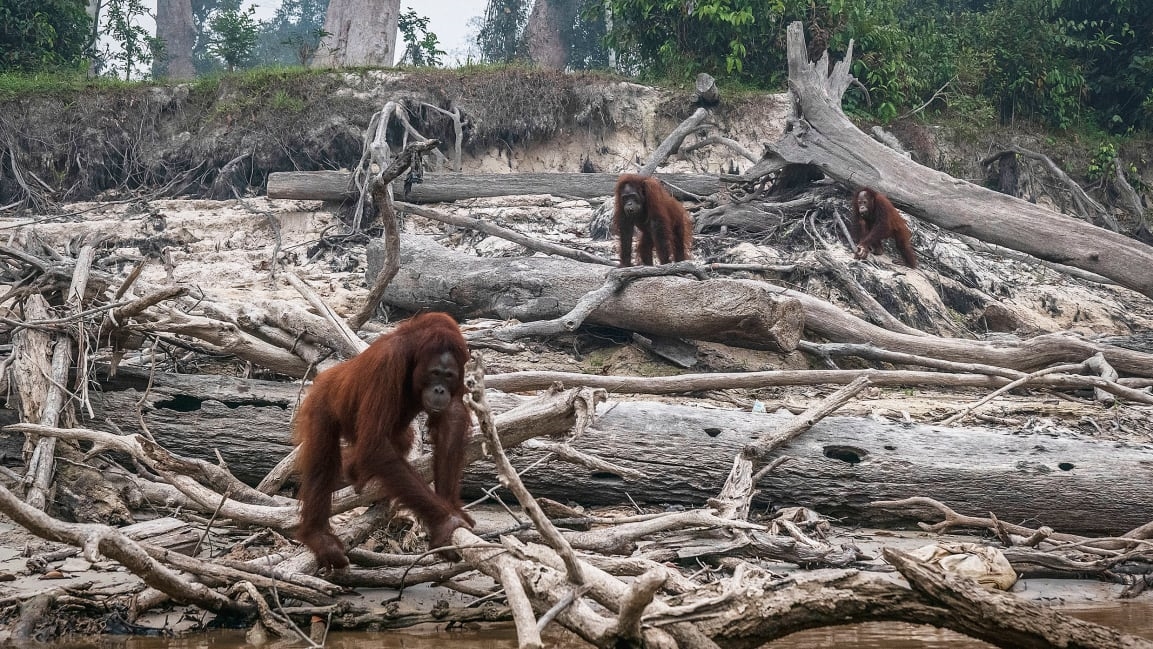Wildlife populations have declined by 68% since 1970—and it’s humanity’s fault
Over the past 50 years, as human activity has skyrocketed—with our global population increasing by nearly four billion, and consumption, global trade, and deforestation all soaring—we’ve lost, on average, more than two-thirds of world’s wildlife populations. And with that cost to our natural world comes dire consequences for our own health.
That’s according to a new report from the World Wildlife Fund. The Living Planet Report is a biannual study from WWF on trends in biodiversity and the health of the planet. Looking at nearly 21,000 monitored populations of more than 4,300 species of mammals, birds, fish, reptiles and amphibians around the world, this year’s report found that between 1970 and 2016, the size of those populations fell an average of 68%. Some species fared even worse. Wildlife populations in Latin America and the Caribbean saw an average decline of 94%, and freshwater species around the world have dropped 84% on average.
Our planet’s biodiversity “is being destroyed by us at a rate unprecedented in history,” the authors write. Since the Industrial Revolution, human activity has led to the loss of tens of millions of hectares of forests and more than 85% of the world’s wetlands. Of all the Earth’s ice-free land, 75% has been “significantly altered,” and our oceans have been largely overfished and polluted.
Currently, climate change is not the biggest driver of this biodiversity loss. It’s our food production, mainly the conversion of native habitats into agricultural systems. Agriculture is responsible for 80% of deforestation, meaning if we want to stem this biodiversity loss, we need to transform our food systems. As time goes on, though, climate change will become an even bigger driver.
That’s alarming for our plant and animal populations, and also for us. Humanity overspends its biological budget—meaning we take more from the Earth to sustain our lifestyles than the planet can regenerate—every year. We’re living each year, per the report, as if we have 1.56 Earths. As we lose more and more biodiversity, we lose the resources to sustain humanity’s demand, and that in turn will harm our health, wealth, and security.
This is a sign of our “broken” relationship with nature. “These wildlife population trends would be devastating enough taken as an independent metric—but they aren’t independent. Wildlife population trends are an overall indicator for the health of our planet,” says Jeff Opperman, WWF’s Global Freshwater Lead Scientist, over email. “When one alarm bell is ringing this loudly—a 68% decline in average species populations—that means the whole system is off balance. That matters to people because nature provides us with everything: nutritious food, clean air, clean water, medicine.”
Nature and biodiversity also protect humans, he adds, and we’re already seeing the effect of that loss of protection. In 2019, Africa had its largest outbreak of desert locusts in decades, India and Pakistan experienced extreme droughts and heat waves that forced tens of thousands to leave their homes, and more than 10 million hectares—the size of Iceland—burned in Australia’s wildfires. This year has brought a new, worldwide consequence of these global changes: the COVID-19 pandemic. Though we may not know the complete origins of the novel coronavirus, we do know that 60% of emerging infectious diseases come from animals, and the emergence of such diseases is correlated with high human population density, and driven by deforestation and the increased harvesting of wildlife.
“Yes, these trends can actually be reversed. It really is possible, but it will take global conservation strategies along with a transformation of the way we produce and consume as humans, especially for our food system,” Opperman says. We just need to heed these warnings—the pandemic, the fires—of biodiversity loss, and do something about it. He’s optimistic we will. “Young people today really understand this because they are growing up in a world that’s already seeing the impacts of climate change. Unlike previous generations, they don’t need to be convinced that this is a problem, or that it’s not just a side issue,” he says. “I’m not only optimistic but I’m confident that there will be changes to come that will help biodiversity recover and reverse the trends we’re seeing now.”
(40)



